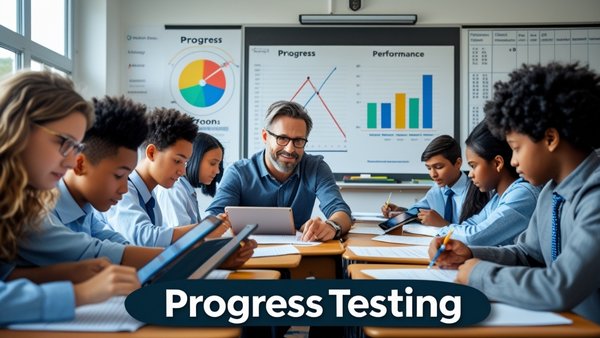How Progress and Placement Tests Improve Learning Outcomes
Home » Education » How Progress and Placement Tests Improve Learning Outcomes
In the ever-evolving landscape of education, ensuring that students achieve their full potential is paramount. Schools and educators strive to provide the best learning experiences tailored to the needs of each student.
One effective way to accomplish this is through progress and placement tests, tools designed to enhance learning outcomes by providing detailed insights into student performance. In this article, we explore how these assessments can transform the educational journey of high school students.
Understanding Progress and Placement Tests
Progress and placement tests are integral to modern education systems, particularly in schools catering to high school students from Year 2 to Year 11. While both serve different purposes, they are united by a common goal: to ensure that students are on the right path to academic success.
Progress Tests are conducted periodically throughout the academic year. They are designed to track a student’s development, providing a snapshot of their understanding and retention of the material covered in the curriculum.
By assessing students regularly, schools can identify areas where they excel and pinpoint subjects that may require additional attention. This continuous monitoring helps educators tailor their teaching strategies to meet the individual needs of each student, ultimately fostering a more personalised learning experience.
Placement Tests, on the other hand, are typically administered at the beginning of an academic year or when a student transitions to a new school.
These tests are used to determine the most appropriate level or class for a student, based on their current knowledge and skills. Placement tests ensure that students are neither under-challenged nor overwhelmed, placing them in an environment where they can thrive and progress at a pace suitable for their abilities.
Benefits of Progress and Placement Tests
Enhancing Learning Through Informed Instruction
The data gathered from progress and placement tests are invaluable for educators. It allows them to make informed decisions about their teaching methods and strategies, leading to improved learning outcomes. When teachers have a clear understanding of a student’s strengths and weaknesses, they can adjust their instruction to address specific needs and apply high-impact teaching strategies.
For instance, if a progress assessment reveals that a group of students is struggling with a particular concept in mathematics, teachers can revisit that topic with a different approach or provide additional resources.
Similarly, if a placement test indicates that a student is performing above their year level in a particular subject, they can be placed in an advanced class where their skills will be appropriately challenged.
By using these assessments, schools can ensure that their educational practices are evidence-based and responsive to the needs of their students. This not only improves academic performance but also boosts student confidence and engagement, as they receive the support they need to succeed.
Facilitating Targeted Interventions
One of the most significant advantages of progress and placement tests is their ability to facilitate targeted interventions. When students struggle, it is crucial to address the issue as early as possible to prevent long-term academic difficulties.
These assessments help identify students who may be at risk of falling behind and allow educators to implement intervention strategies tailored to the specific needs of those students.
Targeted interventions can take many forms, from additional tutoring sessions to the use of adaptive learning technologies. The key is that these interventions are based on precise data, ensuring that they are both effective and efficient.
By addressing learning gaps early, schools can help students get back on track and achieve the academic outcomes they are capable of.
Preparing Students for Future Success
The benefits of progress and placement tests extend beyond immediate academic performance. By placing students in the right learning environment and providing them with the support they need, these assessments lay the groundwork for future success.
Students who are appropriately challenged and supported are more likely to develop a love for learning, build strong foundational knowledge, and develop critical thinking skills that will serve them well throughout their academic careers and beyond.
Moreover, schools that regularly use these assessments are better equipped to prepare their students for the challenges of further education, such as university entrance exams or vocational training.
By fostering a culture of continuous assessment and improvement, schools can ensure that their students are not only meeting current academic standards but are also prepared for the demands of higher education and the workforce.
Where Experts Come In
Achieving optimal results in student assessments requires more than just routine testing; it demands the expertise of seasoned professionals. This is where expert assessment providers play a pivotal role.
These specialists are adept at designing and implementing assessments that cater to the unique needs of students and schools alike.
By collaborating with an expert in conducting a school student progress assessment, schools gain access to deeper insights and actionable data. This partnership ensures that assessments are not only accurate and reliable but also tailored to support educators in delivering a more personalised and effective learning experience for their students.
Conclusion
Progress and placement tests play a crucial role in improving learning outcomes for high school students. By providing educators with detailed insights into student performance, these assessments enable informed instruction, facilitate targeted interventions, and prepare students for future success. For schools looking to enhance their educational offerings and ensure that every student reaches their full potential, incorporating these tests into their curriculum is a step in the right direction.


